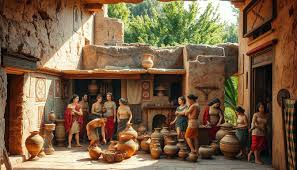When we think of art, we often picture the masterpieces of renowned artists like Van Gogh, Picasso, or Da Vinci. However, the roots of artistic expression run much deeper, dating back to ancient civilizations that laid the groundwork for the creative endeavors we see today. Ancient Artz encompasses a rich tapestry of history, culture, and creativity, reflecting the values, beliefs, and environments of past societies. In this article, we’ll explore the significance of ancient art, its various forms, the techniques used, and its lasting impact on contemporary art and culture.
The Significance of Ancient Artz
Art has been an integral part of human civilization since the dawn of time. Ancient Artz serves as a vital link to our past, offering insights into the social structures, religious beliefs, and everyday lives of people centuries ago. From cave paintings to sculptures, ancient art provides us with a window into the thoughts and emotions of individuals long gone.
One of the most remarkable aspects of ancient art is its universality. Regardless of geographical location or time period, humans have expressed their creativity through visual means, making ancient art a global phenomenon. The study of ancient artz allows us to connect with different cultures, fostering a greater appreciation for diversity and creativity.
Forms of Ancient Artz
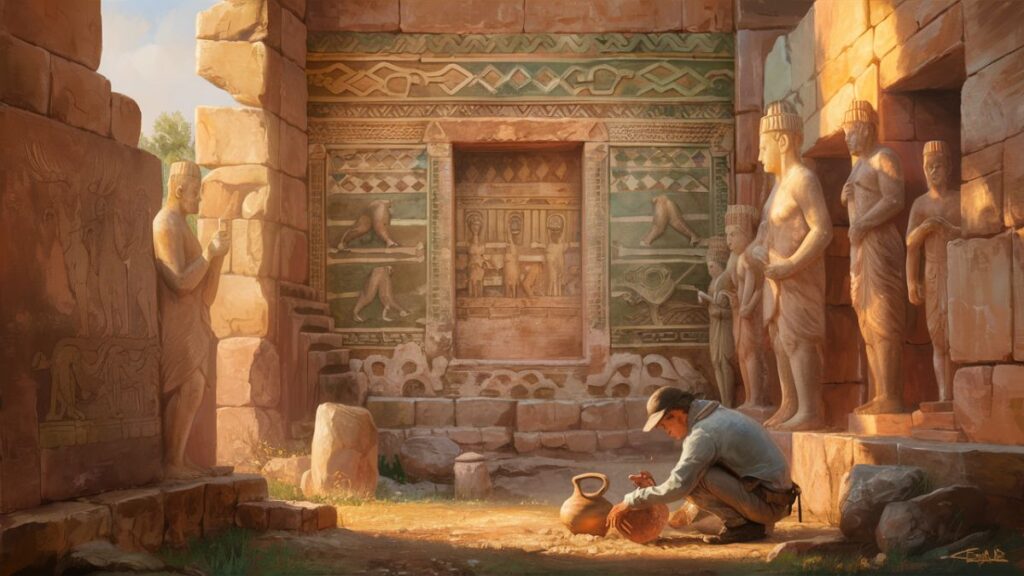
Ancient art comes in various forms, each reflecting the unique characteristics of the time and place in which it was created. Here are some key forms of ancient artz that highlight the creativity of different civilizations:
1. Cave Paintings
Dating back to the Upper Paleolithic period, cave paintings are among the earliest examples of human artistic expression. Found in locations like Lascaux (France) and Altamira (Spain), these paintings feature animals, human figures, and abstract shapes created using natural pigments. The significance of cave paintings lies in their representation of early human life and the connection to their environment.
2. Sculpture
Sculpture has been a prominent form of artistic expression throughout history. Ancient cultures, such as the Egyptians, Greeks, and Romans, created elaborate statues and reliefs that showcased their artistic skills. Egyptian sculptures often depicted pharaohs and deities, while Greek sculptures emphasized the human form, exemplified in works like the Venus de Milo and the Discobolus.
3. Ceramics and Pottery
Ceramics played a crucial role in many ancient societies, serving both practical and artistic purposes. The intricate designs found on Greek vases or the bold colors of Chinese pottery illustrate the cultural significance of this medium. These items were not only functional but also served as canvas for storytelling and cultural expression.
4. Textiles and Weaving
Textiles have been used for thousands of years, with civilizations like the Andean cultures and the ancient Egyptians creating beautifully crafted fabrics. The patterns and techniques employed in ancient textiles reflect cultural narratives and social hierarchy, as well as showcasing craftsmanship.
5. Architecture
Ancient architecture is perhaps one of the most enduring forms of ancient artz. Structures such as the Pyramids of Giza, the Parthenon, and the Colosseum not only demonstrate engineering prowess but also embody the artistic and cultural values of their respective societies. The grandeur and intricacy of ancient architecture have inspired countless generations of builders and artists.
Techniques Used in Ancient Artz
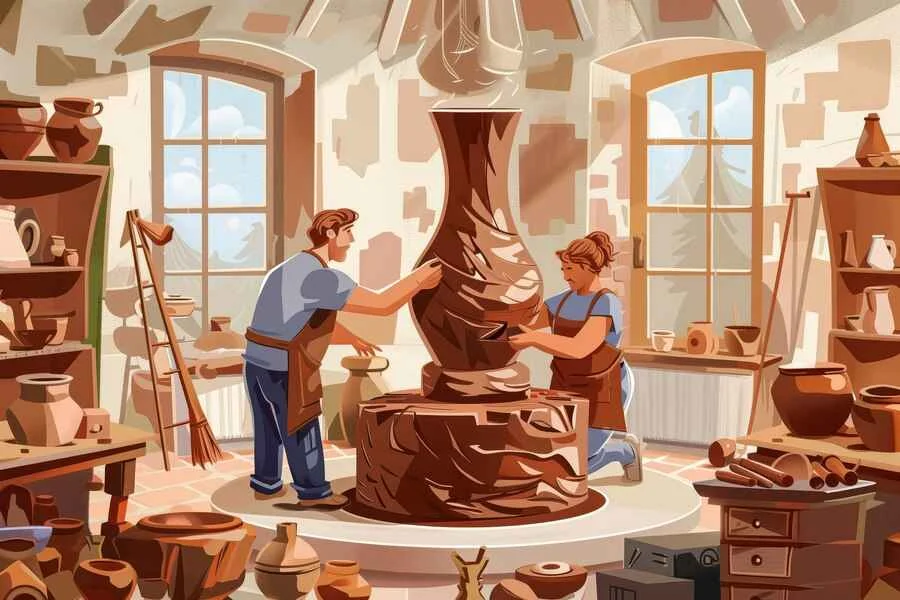
Ancient artists employed various techniques to create their masterpieces, often using materials that were readily available in their environment. Here are some common techniques associated with ancient artz:
1. Natural Pigments
Many ancient artists relied on natural pigments derived from minerals, plants, and earth to create color. For example, ochre was often used for cave paintings, while iron oxide provided reds and yellows for pottery designs. The use of these materials demonstrates the resourcefulness of ancient civilizations.
2. Carving and Modeling
Sculptors utilized tools made from stone, bone, and metal to carve and shape their works. Techniques such as chiseling, modeling, and polishing allowed them to create intricate details and lifelike representations. The craftsmanship involved in these processes was often a lifelong pursuit.
3. Mosaics and Frescoes
The use of mosaics, made from tiny pieces of glass or stone, was prevalent in ancient Mediterranean cultures. Frescoes, painted directly onto wet plaster, were used in many ancient Roman homes and public spaces, showcasing vibrant scenes and narratives.
4. Weaving Techniques
Textile creation involved meticulous techniques such as spinning, dyeing, and weaving. Ancient cultures developed unique patterns and styles that not only served practical purposes but also conveyed cultural meanings and identities.
The Cultural Impact of Ancient Artz
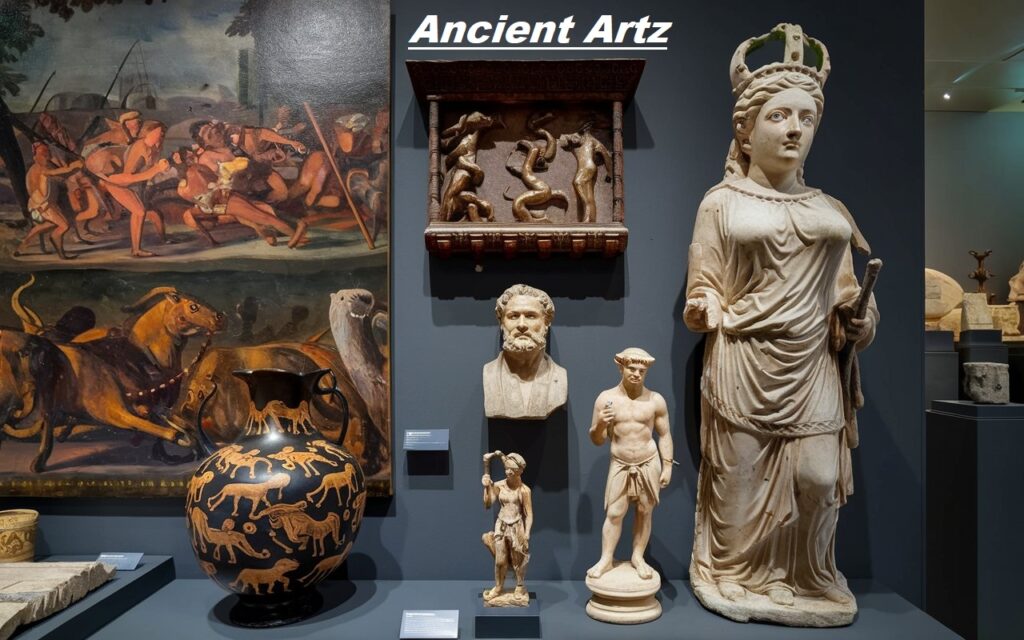
The influence of ancient artz is still felt today, shaping modern art movements and inspiring contemporary artists worldwide. By studying ancient art, we can glean valuable lessons about creativity, cultural identity, and the human experience.
1. Cultural Identity
Ancient art has played a significant role in the formation and preservation of cultural identity. Many societies use their artistic heritage as a source of pride, fostering a sense of belonging and continuity. From indigenous cultures to modern nations, ancient art forms a crucial aspect of cultural expression.
2. Inspiration for Contemporary Artists
Many contemporary artists draw inspiration from ancient art traditions, reinterpreting and adapting these ideas to reflect modern themes. By reimagining ancient techniques and motifs, artists can create work that resonates with both the past and the present, bridging the gap between eras.
3. Educational Value
Ancient Artz serves as an educational tool, helping us understand human history in a visual and emotional context. Art history classes often delve into ancient art, offering insights into the lives and beliefs of historical civilizations. By studying these forms of expression, students can develop critical thinking skills and a deeper appreciation for cultural diversity.
4. Preservation and Conservation
The need to preserve ancient art for future generations has led to significant advancements in restoration and conservation techniques. Institutions around the world work tirelessly to protect and restore ancient artifacts, ensuring that these cultural treasures remain accessible for study and enjoyment.
Exploring Notable Examples of Ancient Artz
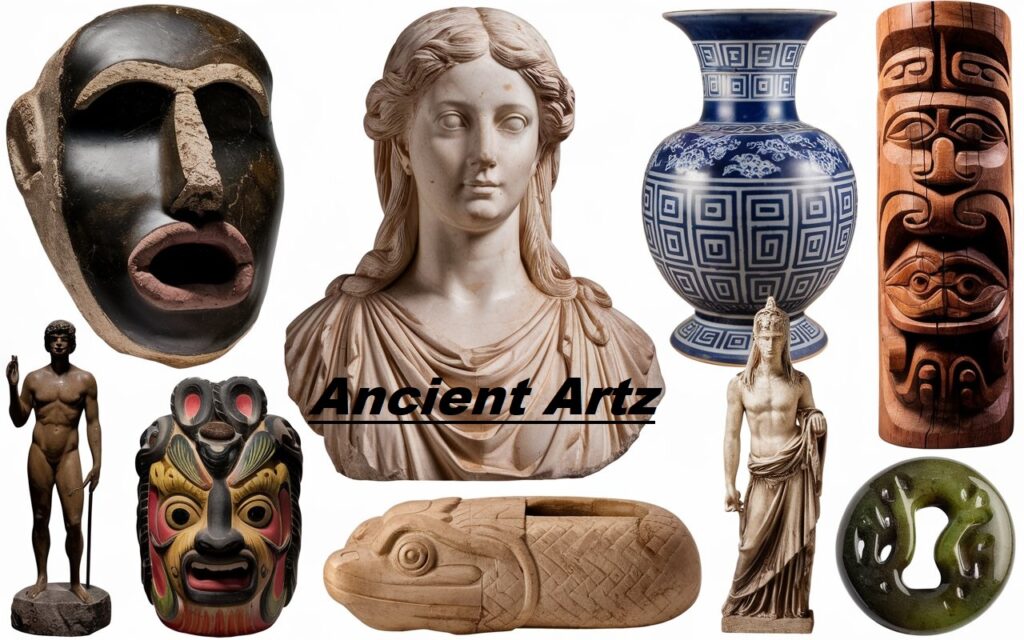
To truly appreciate ancient artz, one must examine some of the most notable examples from various cultures. These works not only illustrate the artistry of their creators but also shed light on the cultural contexts in which they were produced.
1. Cave of Lascaux
The Lascaux Cave in southwestern France is renowned for its upper Paleolithic cave paintings, dating back approximately 17,000 years. The intricate depictions of large animals, such as bison, deer, and horses, suggest a deep connection between humans and their environment. These paintings, created using charcoal and ochre, represent one of the earliest forms of artistic expression, believed to have been used in hunting rituals or as a means of storytelling. The vibrant colors and dynamic compositions exemplify the skill of early humans and their desire to communicate through visuals.
2. The Great Pyramids of Giza
As iconic symbols of ancient Egypt, the Great Pyramids of Giza are architectural marvels that demonstrate the advanced engineering and artistic knowledge of the time. Built around 2580–2560 BC for the Pharaoh Khufu, the Pyramid of Giza is the largest of the three pyramids and originally stood at an impressive height of 146.6 meters (481 feet). These monumental structures were not merely tombs but also reflected the Egyptians’ beliefs in the afterlife, showcasing intricate carvings, hieroglyphs, and elaborate burial goods intended to accompany the Pharaoh into the next world.
3. The Parthenon
The Parthenon, located on the Acropolis of Athens, is a quintessential example of ancient Greek architecture and art. Constructed in the 5th century BC, the temple was dedicated to the goddess Athena, whom the people of Athens considered their patroness. The Parthenon’s Doric design, paired with its exquisite sculptural details, such as the frieze depicting the Panathenaic procession, showcases the Greeks’ exceptional skill in artistry and engineering. The use of optical illusions in the Parthenon’s design demonstrates the mathematical precision that the ancient Greeks applied to their art and architecture.
4. Terracotta Army
Discovered in 1974 near the tomb of China’s first Emperor, Qin Shi Huang, the Terracotta Army is a stunning display of ancient Chinese art. Consisting of thousands of life-sized figures, including soldiers, horses, and chariots, the Terracotta Army was buried to protect the emperor in the afterlife. Each figure is intricately detailed, with unique facial expressions and clothing styles that reflect the military hierarchy of the time. This incredible find not only highlights ancient China’s artistic capabilities but also offers insight into the culture and customs of the Qin dynasty.
5. Minoan Frescoes
The Minoan civilization of ancient Crete is characterized by its exquisite frescoes, which adorned palaces and public buildings. These vibrant wall paintings, dating back to 1600–1400 BC, depict various aspects of Minoan life, including rituals, sports, and natural scenes. Notable examples include the “Dolphin Fresco” from the Palace of Knossos, which showcases the Minoans’ appreciation for nature and their skill in using bold colors and fluid shapes to create dynamic compositions. Minoan art is significant not only for its aesthetic qualities but also for what it reveals about the society’s values and daily life.
Ancient Artz and Its Place in Modern Culture
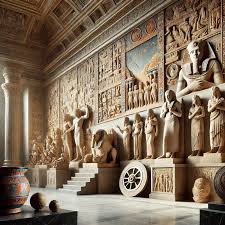
The study and appreciation of ancient artz continue to resonate today, serving various purposes in contemporary society. From education to artistic inspiration and conservation, the relevance of ancient art remains profound.
1. Art Education
The incorporation of ancient art into educational curricula plays a vital role in teaching students about historical contexts, artistic techniques, and cultural significance. Art history courses often highlight the importance of ancient art, encouraging students to draw connections between historical movements and contemporary practices. By analyzing ancient works, students can develop critical thinking and analytical skills that enhance their understanding of not only art but also the human experience.
2. Influencing Modern Artists
Many contemporary artists are influenced by the themes, motifs, and techniques found in ancient artz. Artists like Anish Kapoor, whose works often explore the relationship between space and form, and Yayoi Kusama, whose immersive installations challenge perceptions of reality, owe a debt to the innovative spirit of ancient creators. By studying and adapting ancient methods, these artists infuse modern works with deep historical narratives and cultural resonance.
3. Cultural Reclamation
In many indigenous cultures, there is a growing movement to reclaim and revitalize traditional art forms that were suppressed or marginalized throughout history. By reconnecting with their artistic heritage, communities foster a renewed sense of identity and cultural pride. Ancient artz serves as a foundation upon which contemporary artists can build, allowing them to honor their ancestors while addressing modern themes and challenges.
4. Digital Preservation
As technology advances, digital tools have become crucial for preserving and sharing ancient art. Virtual museums and online galleries allow broader access to ancient artifacts, ensuring that these cultural treasures can be appreciated by people around the world. Scholars and conservationists are also utilizing digital archiving methods to document and study ancient works, enhancing our understanding of artistic techniques and historical contexts.
The Future of Ancient Artz: Preservation and Innovation
As we move forward, the preservation of ancient artz remains a critical concern. Environmental factors, urban development, and tourism pose threats to ancient sites and artifacts. However, with concerted efforts from governments, organizations, and communities, we can strive to safeguard these irreplaceable treasures.
1. Sustainable Tourism
Implementing sustainable tourism practices at ancient sites is essential to protect their integrity while allowing visitors to appreciate their significance. By promoting responsible tourism, we can minimize the negative impact on these sites while fostering a sense of respect and understanding among visitors.
2. Community Involvement
Engaging local communities in the preservation of their cultural heritage is vital. By instilling a sense of pride and ownership, we can ensure that traditional art forms and practices are passed down through generations. Community programs that encourage storytelling, craft workshops, and public art initiatives can help keep ancient traditions alive in a modern context.
3. Innovative Restorative Techniques
Advancements in science and technology can also aid in the restoration and conservation of ancient art. Non-invasive techniques, such as 3D imaging and laser cleaning, allow conservators to analyze and preserve works without causing damage. These innovations provide valuable insights into the materials and methods used by ancient artists, enhancing our appreciation of their craftsmanship.
Conclusion
In summary, ancient artz serves as a critical bridge connecting us with our past while continuing to inspire creativity and innovation in the present. By studying the richness of ancient artistic traditions, we gain insights into the diverse cultures and experiences that have shaped human civilization. The impact of these ancient expressions is felt in education, modern art, community initiatives, and conservation efforts.
As we strive to appreciate and preserve the legacies of our ancient ancestors, we ensure that the creativity and ingenuity of past civilizations continue to resonate and inspire future generations. The journey into ancient artz is not just an exploration of history; it is a celebration of the enduring human spirit and its capacity for creativity, connection, and cultural expression. Through this exploration, may we foster a deeper understanding of our shared humanity and the timeless beauty that art brings to our lives.
In conclusion, ancient artz is a fascinating and vital aspect of human history. It embodies the creativity, complexity, and diversity of ancient societies, providing insights into their values, beliefs, and experiences. Whether through cave paintings, sculptures, ceramics, or textiles, the legacy of ancient artists continues to influence modern culture and art.
As we move forward in our rapidly changing world, it is essential to recognize the value of our artistic heritage. By appreciating and studying ancient artz, we can foster a deeper understanding of our shared human history, inspiring future generations to embrace creativity, cultural diversity, and the beauty of artistic expression.
Let us continue to explore, celebrate, and preserve the richness of ancient artz, ensuring that these creative legacies endure for generations to come.
